I only recently came back from the Faroe Islands and would 100% love to go back some time in the future.
The scenery was absolutely dazzling. It was funny, as we would be in the minibus driving for around an hour and there wouldn’t be a point where the outside landscape wasn’t picturesque.
This is a stark contrast to what I’m used to back home in the UK, the concrete jungle of the city. This was a chance to escape the crowds, the long queues and the busy roads.
About The Faroe Islands
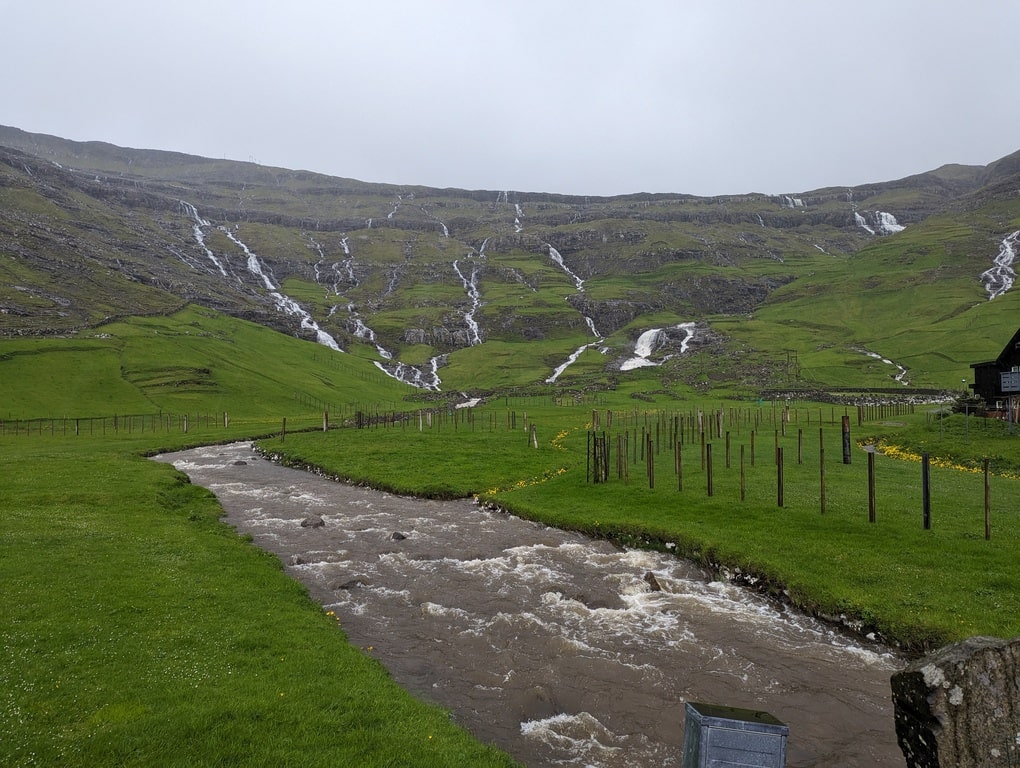
Before you head off to the Faroe Islands, it’s worth quickly highlighting a few important things you should know. Firstly, the language. The main language they speak is Faroese and they’re very proud of the language.
While the islands are a part of the Kingdom of Denmark, the islands are self-governed and Danish is spoken as the second language, but don’t expect to see it on signs or commonly spoken in cafes.
For all the English speakers reading this, I didn’t meet a single person who couldn’t speak immaculate English, which was a nice relief. Still, it’s good to learn some basic Faroese before going just to be polite and to embrace the culture.
I would strongly recommend looking into renting a car if you’re visiting, as it’s the main form of transportation. There are free buses that go to many locations, but the car is the main method and allows you to go to more obscure or hard-to-reach locations.
Currently you can fly in directly from Gatwick airport, via Atlantic Airways, otherwise you can get a connecting flight at Copenhagen or Edinburgh being the most common from the UK.
The Best Time To Visit The Faroe Islands

Despite its location alongside Norway and Iceland, the temperature doesn’t vary too drastically from winter to summer, normally going from 3c in winter to 10c in the summer. While we were there in May, it was between 8-10c.
The winter does tend to see a fair few storms, so as you may expect, the summer months of May-August are the best times to visit.
Also, unlike many other Nordic locations, you won’t find restaurants and town overly crowded with tourists, so you can benefit from the warmer weather without sacrificing on the experience.
Things To Do In The Faroe Islands
So let’s dive into the best things I can recommend from my trip to the Faroe Islands. Every recommendation is based on a personal experience.
1) Heimablídni – Home Hospitality

We did a couple of these home hospitality experiences while here, but the big recommendation is to visit Harriet and John’s farm for some lunch and to see all the animals.
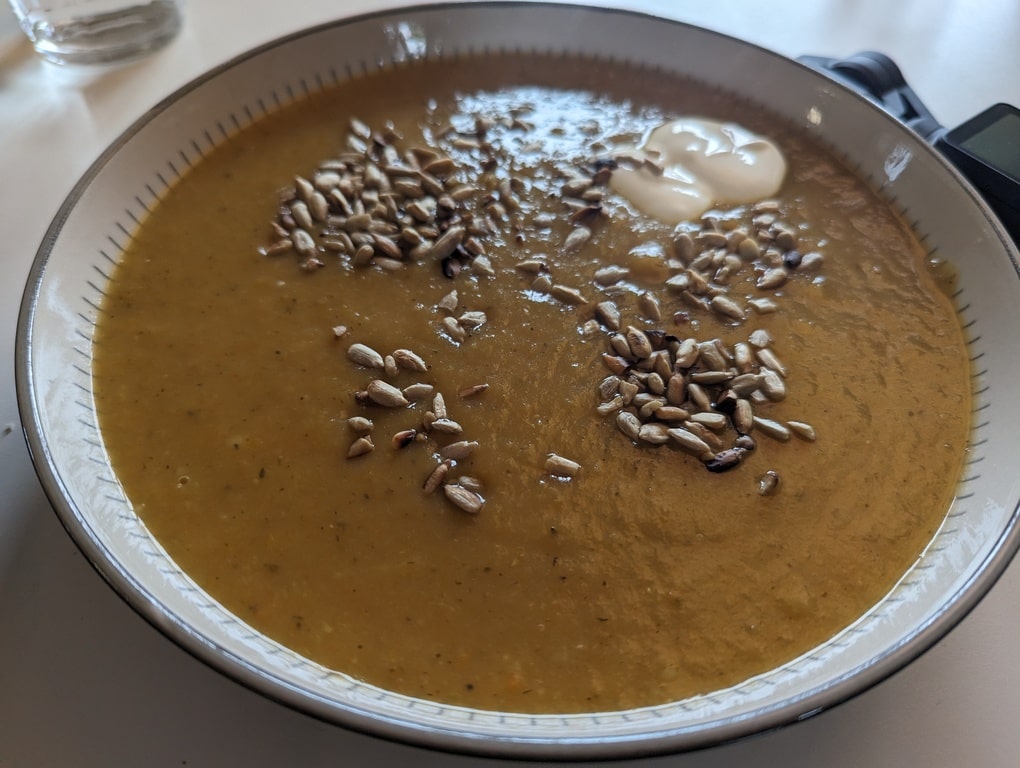
They made us a beautiful lunch, consisting of a scrumptious soup with rye bread and rhubarb jam, some lamb, sunflower seeds and cream cheese, followed by waffles with cream and rhubarb jam. Honestly, they need to sell the rhubarb jam, as it was breath-takingly nice.
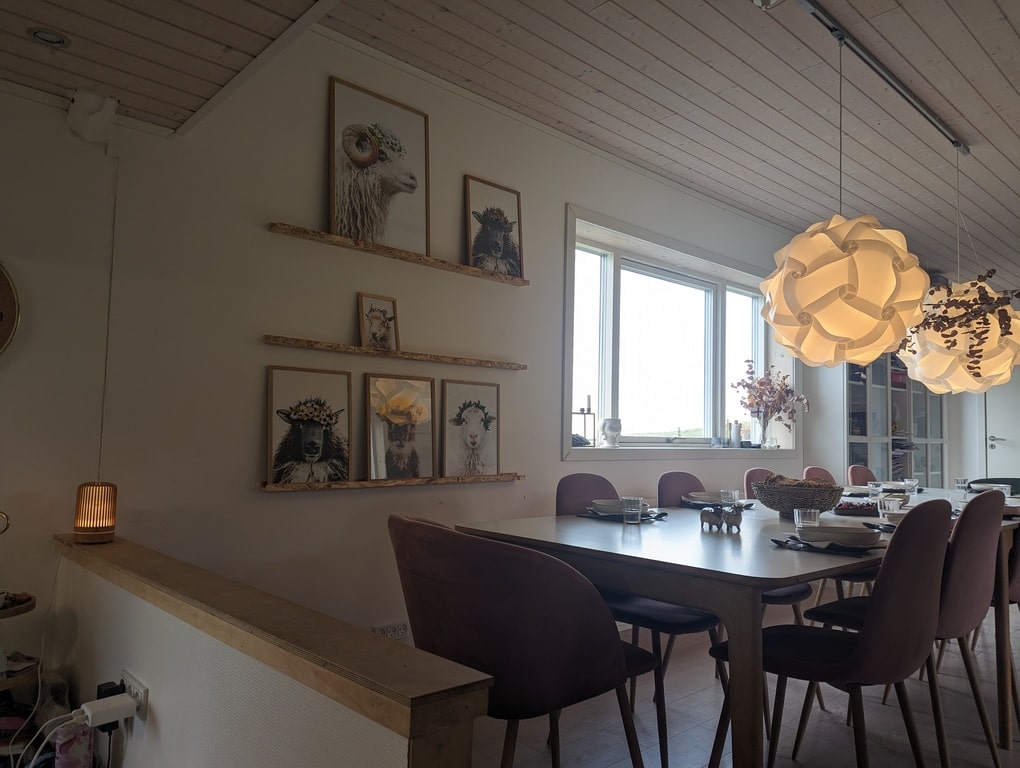
Listening to the work they put in is astonishing. She has to feed so many animals, which would be understandable if that was your entire day done, but that’s just a small aspect.

She also works in a political role in town. On top of that, she’s actively pushing for the Faroese horses to be further protected, of which she has a few herself, which you will meet up close if you visit.
She also runs a business taking photos of the sheep with cute flower head bands on, while you can purchase the photos at the farm or she can deliver if ordered online, but the cost is a bit higher if you want it delivered overseas, so best to pick one up while there, we grabbed a couple of postcards.

They have a beautiful bed and breakfast available, so you can stay the night and wake up to see sheep outside your window.

If you haven’t heard of a Heimablídni before, Visit Faroe Islands have a great description which beats anything I could write on the subject.
2) Múlafossur Waterfall

Found on the Vágarisland, the one with the airport you fly into, it’s most likely you will be staying in Torshavn, so you’d either reach this waterfall by car or on a boat trip, depending on the weather and the size of the waves that day.
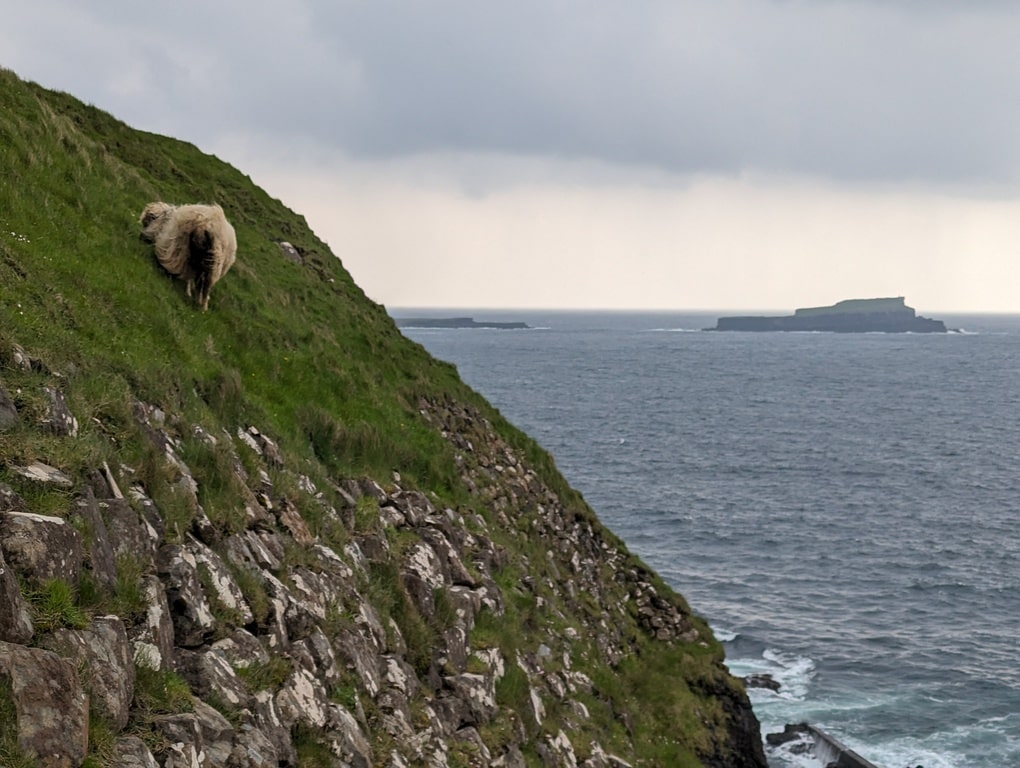
The waterfall is found in the tiny village Gásadalur which has a population of around 11 people, however the introduction of the Gásadalstunnilin tunnel has made it more accessible from other areas of the Faroes.
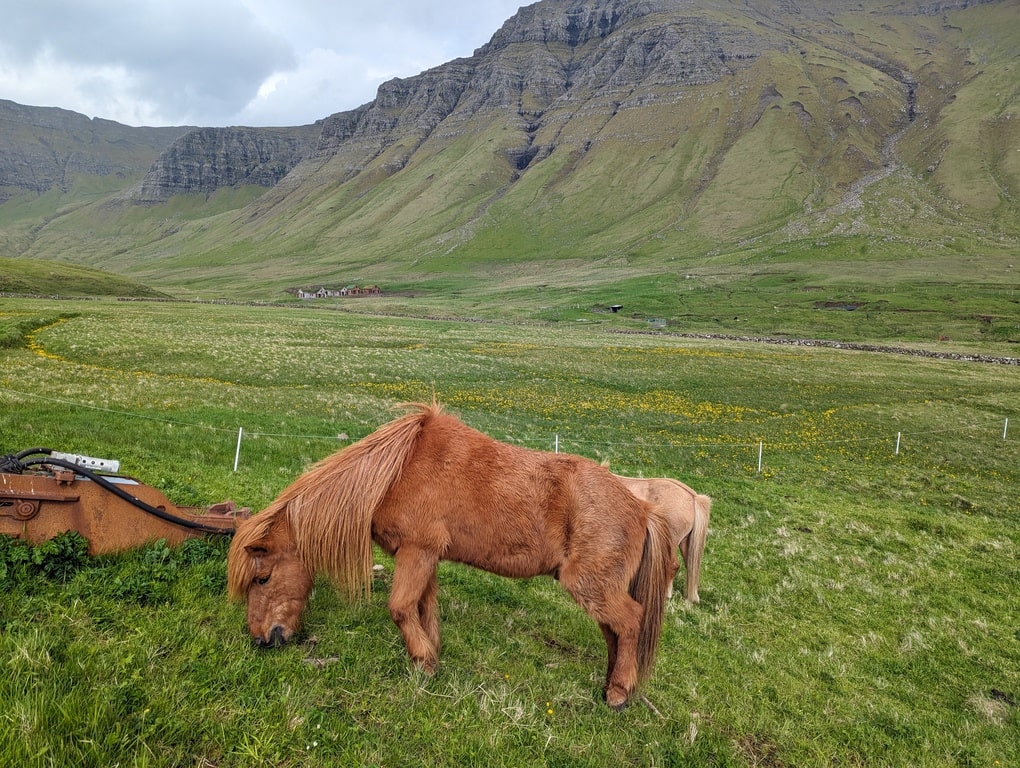
It’s pretty chilly up on the coastline hilltop, so make sure to pack some thermals and waterproofs when heading here.
If you’re lucky, you may even get to spot some puffins nesting along the cliff edges, but we couldn’t spot any that day.
3) Eating In Tórshavn

I can only speak of the restaurants I visited, but I was blown away by how tasty everything was. Of course, it should come as no surprise that the salmon was delicious, considering it’s sourced from here.
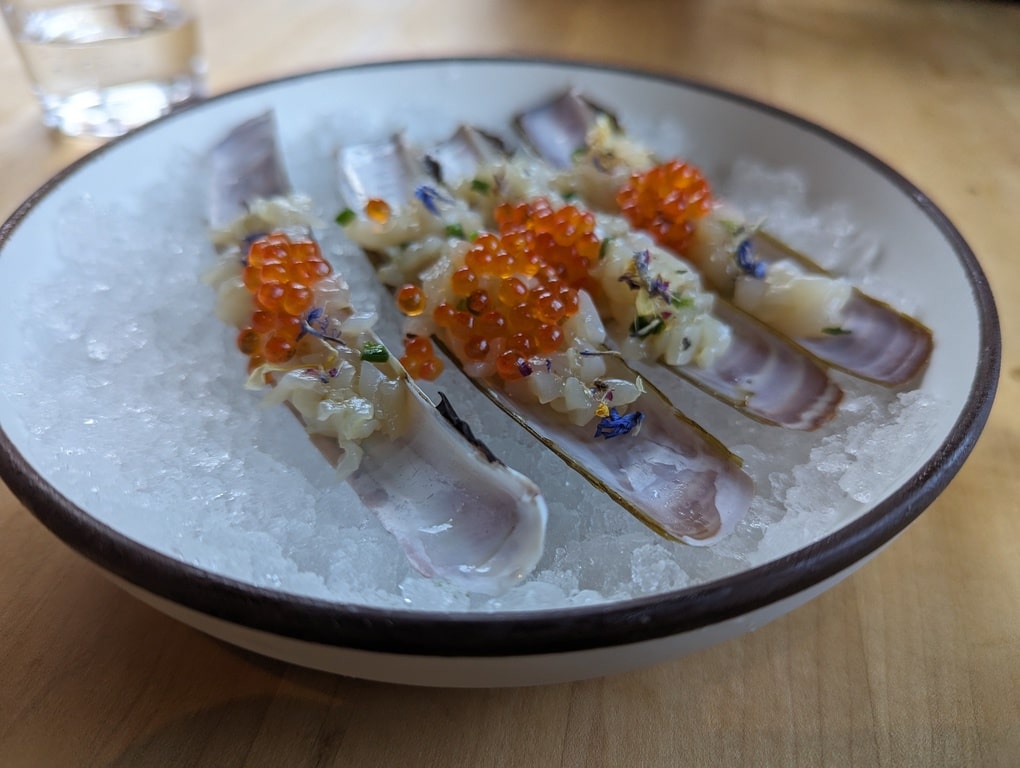
We ate the first night at Roks, a seafood restaurant near the harbour, where you pick from the shorter or longer tasting menu. We obviously went for the longer menu, so we could tick off a few more dishes and I’m exceptionally happy we did.

The Greenlandic snow crab with burnt onion butter was my favourite dish of the night. I have to be honest and say I’ve never eaten crab before, but that’s changed now, it was astonishingly good. You can have a deep dive of their menu here.

The next night we ate at The Tarv Grill House, which was certainly Raquel’s favourite, as she’s much keener on meat than seafood.

The tenderloin steak was cooked to perfection, almost melting in the mouth. Once again, I couldn’t stop myself from eating some salmon.

They offer a combination of locally sourced options, as well as some from further away, depending on what is easy to source. The starters were also amazing, one in particular being the Faroese smoked salmon with Morel cream cheese.
4) Get A Guide & Local Tour

I can’t recommend this enough, as it’s the best way to learn about the local culture, the history and the best places to visit.
These tours will take you to the main attractions, as well as helping you to relax as they handle all the navigating and itinerary while you just relax and learn from an expert.
The tour can be as big or as small as you want it to be. It could be a local tour around Torhasvn, taking in all the best stores, the harbour and where to eat in the evening. Alternatively, it could be a cross country exploration of the Kallurin lighthouse or to the Múlafossur Waterfall.
An added benefit to these tours is that it can include the travel aspect, which can be difficult if you don’t plan on driving while there. This way, you don’t have to worry about booking taxis or finding the best routes, or even working out how the buses work, you can just climb on a minibus or in a car and they’ll take over all the thinking for you.
5) Explore Tinganes

We knew we were going to be exploring Tinganes the next day, but once we finished our dinner, we couldn’t help ourselves but have a sneak peek of what we’d be finding the next day, especially as it was still light at 10pm.
You will find the harbour, where all the ferries are set for their ventures the next day. You will also find a number of red buildings, one of which is the offices for the prime minister. It still feels bizarre that you could just wander past the prime minister; you certainly wouldn’t get that in England.

At the edge of Tinganes, where the path meets the water, is the meeting point for Vikings of the past, as they’d discuss trades or deals, as well as strategies.
The buildings in this area are from around the 17th and 18th century, with some actually marking the date they were constructed, which I like.
The grass roofs are amazing, while on our tour they explained the reasoning behind why they have them, helping to insulate so the house neither gets too cold or too hot. I just loved the idea that they sent a sheep onto the roof to strip back the grass, that sounds hilarious.
If you do visit, they did highlight that you should make sure not to take photos through people’s windows, as these are people’s homes and it’s important to respect that, which tourists do, but you don’t want that to change in the future.
6) Bøur Village

This small village is located not too far from the Múlafossur Waterfall, hence why many people walk from Bøur, on a trail which is known as the Postman’s Trail.
We opted for the lazier option of taking the minibus over after the waterfall, but loved our brief stop-off at Bøur.

There is a restaurant right on the coastline which you can book out for events, from birthdays to weddings.
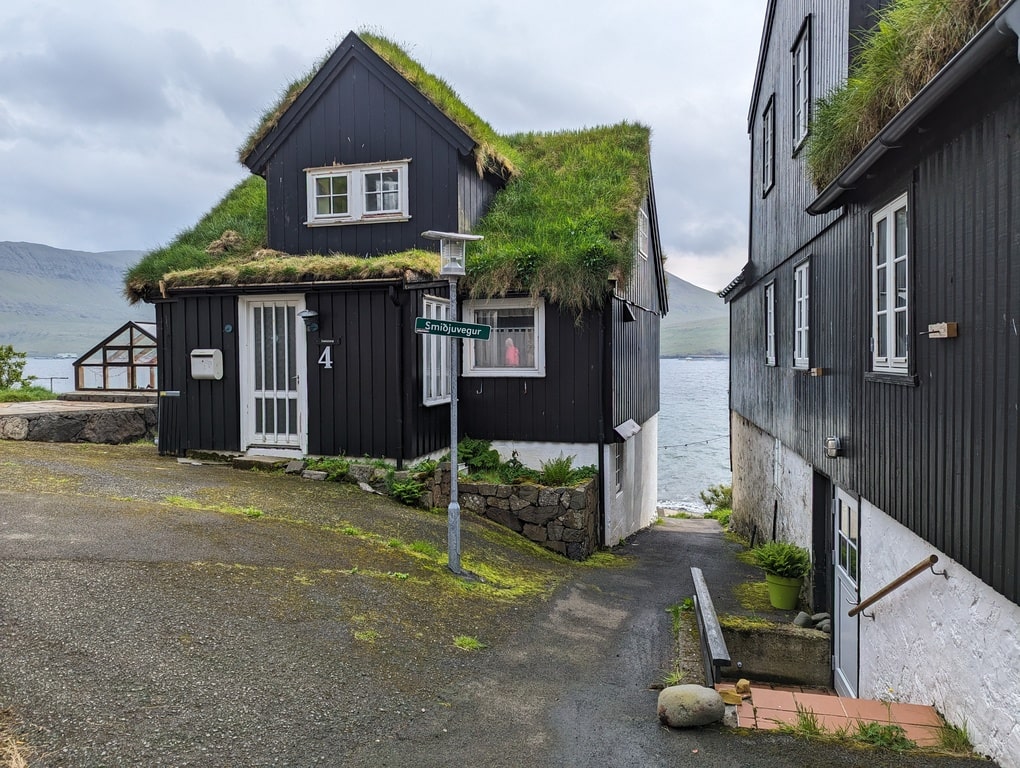
You also have views of Tindhólmur, a visually stunning island that was used for the set of the Peter Pan & Wendy movie. One look at it and you can understand why, like something out of a postcard or a lego box showing a mystical land.
7) Travel To Kirkjubøur

I had learnt the way to pronounce it, but I’ve completely forgotten…But let’s just say it isn’t pronounced how it appears to anyone from England.
Here you can try another Heimablídni, as we had cake and coffee with a local farmer, who talked about the history and legends of the area and when it was all formed.

You will also find the old cathedral with no roof, which might be getting revamped at some point in the future, which would be a shame as it may lose its rugged beauty.
Once you first arrive, there is a building which has details about the village, a photo of the village from above, as well as public toilets.

One thing we have found fascinating about the Faroe Islands is that every building looks different to the next, even on the same street, they love to make them completely unique in colour and design. But in Kirkjubøur, they’re all very similar, with black walls and grass roof coverings.
You can easily reach Kirkjubøur by car from Torshavn in around 15 minutes, however if you don’t have a car, they do have the number 5 and 7 bus route visit here, one for weekdays and one for weekends.
There are no stores or cafe’s here, so make sure to pack some water and snacks before you head over.
8) Fossá Waterfall

The Fossá Waterfall simply had to make it on the list; it’s one of the key attractions bringing people to the area. It’s also the tallest waterfall in the whole of the Faroe Islands.
A road passes right on by, so we pulled up to admire and get some snaps. Interestingly, the water is apparently drinkable, not that I’d get close enough to try it, but if some splashes towards your face through the wind, you can open your mouth and enjoy the clean water.
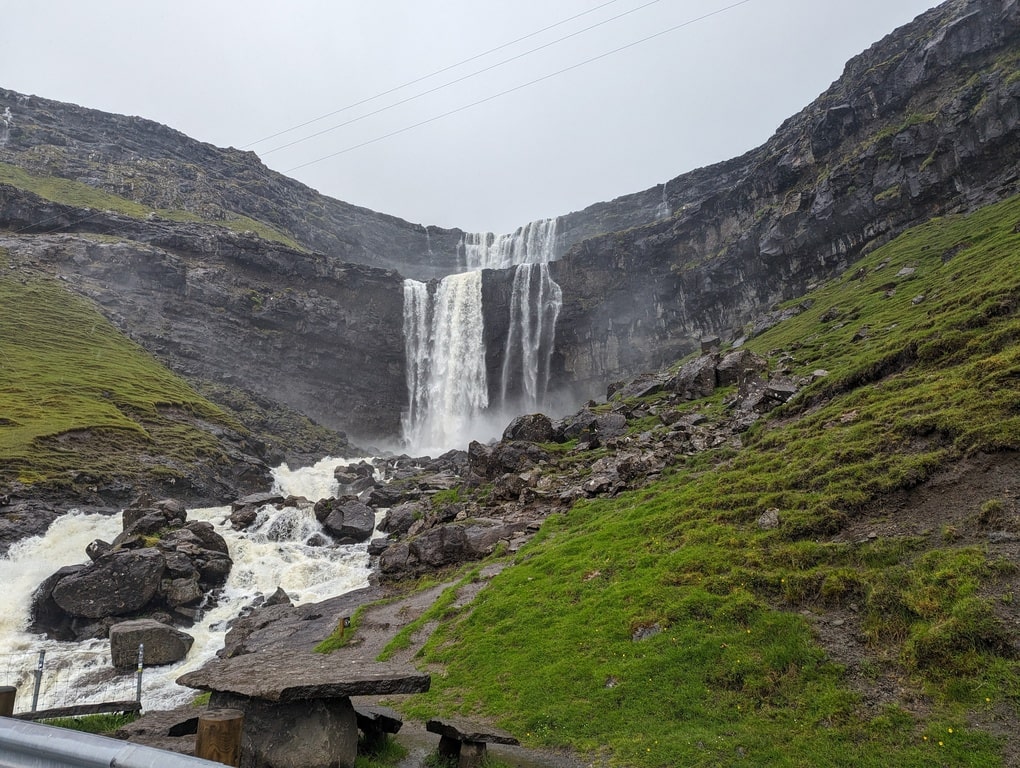
Standing at 140 metres high, this cascading waterfall is a sight to behold, while it was also perfectly on our route from Tjørnuvík to Gjógv.
While it was raining when we arrived, something we thought would be a negative, they reassured us that it’s when most people want to see it, as the water runs even more intensely and it looks even more spectacular. Well I didn’t see it at any other time, but I can certainly say it did look spectacular.
9) Admire The Faroese Art

We didn’t quite make it over to the illustrious National Gallery in Tórshavn, however we did visit Steinprent, the Lithographic Studio of Fine Arts, which was brilliant.
They had some amazing pieces on the ground floor, before we headed upstairs to see them in action as they used these huge slabs of limestone to produce stunning pieces of art.

The artists hand sign and number each print they make right here at Steinprent, while the prints can’t be made again as the limestone will produce a set amount before it’s sanded down. I think that makes it feel that little bit more special, following traditional methods.
Just make sure not to touch the limestone if you venture upstairs, the fat is very quickly absorbed from your finger tips, affecting the final piece of art which will be made and going into each print, hence why they have to be so careful when dealing with these blocks.
10) Shopping In Torshavn
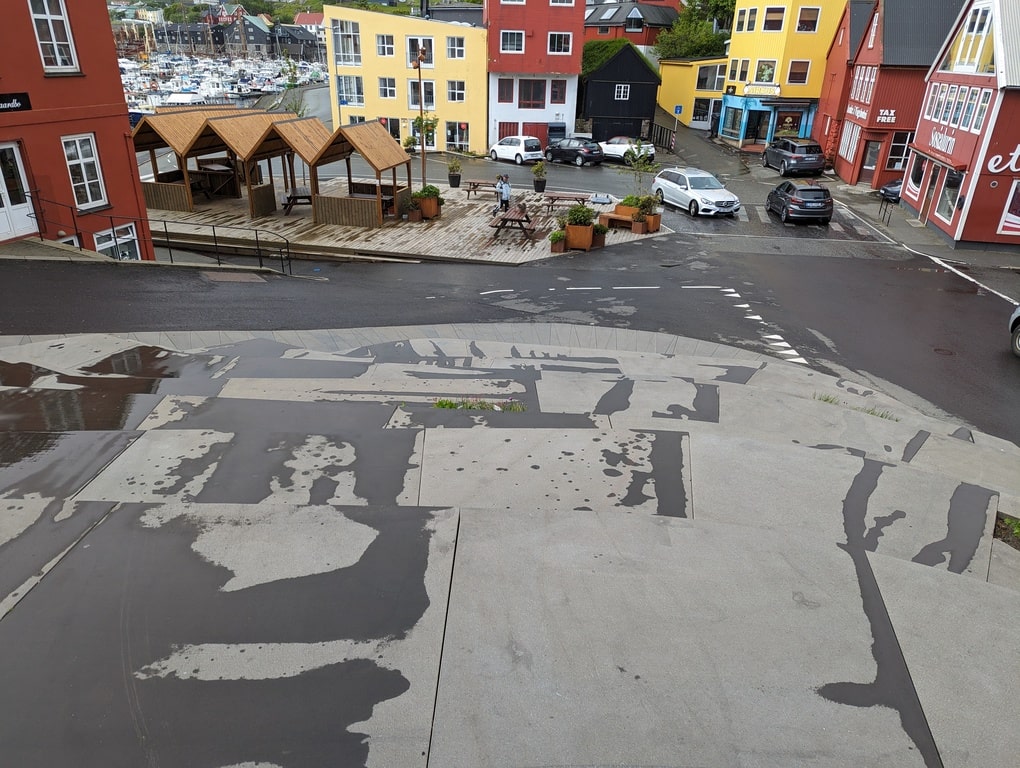
I normally wouldn’t place shopping on a list of the best things to do when on holiday, as I feel this can be done anywhere, but due to the uniqueness of some of these stores and what you’ll find inside, I think it’s most definitely worth doing when visiting Torshavn.
We visited the music shop Tutl Records, where you can find a blend of music by local artists and international bands. In the store at our time of visit was the musician who had actually played and won at the Great Escape festival in Brighton, my local event, which felt bizarre considering how far away we were.

They also have music setup with headphones, with a playlist of local artists. I often love to play foreign music when working, as I don’t like to know the lyrics as I’ll start singing along, so I’ve instantly loaded these onto my Spotify playlist. Elinborg is playing as I write this!
Next up was the local clothes designer Gudrun & Gudrun, selling locally made knitwear, such as sweaters, cardigans, dresses and skirts, for adults and children.
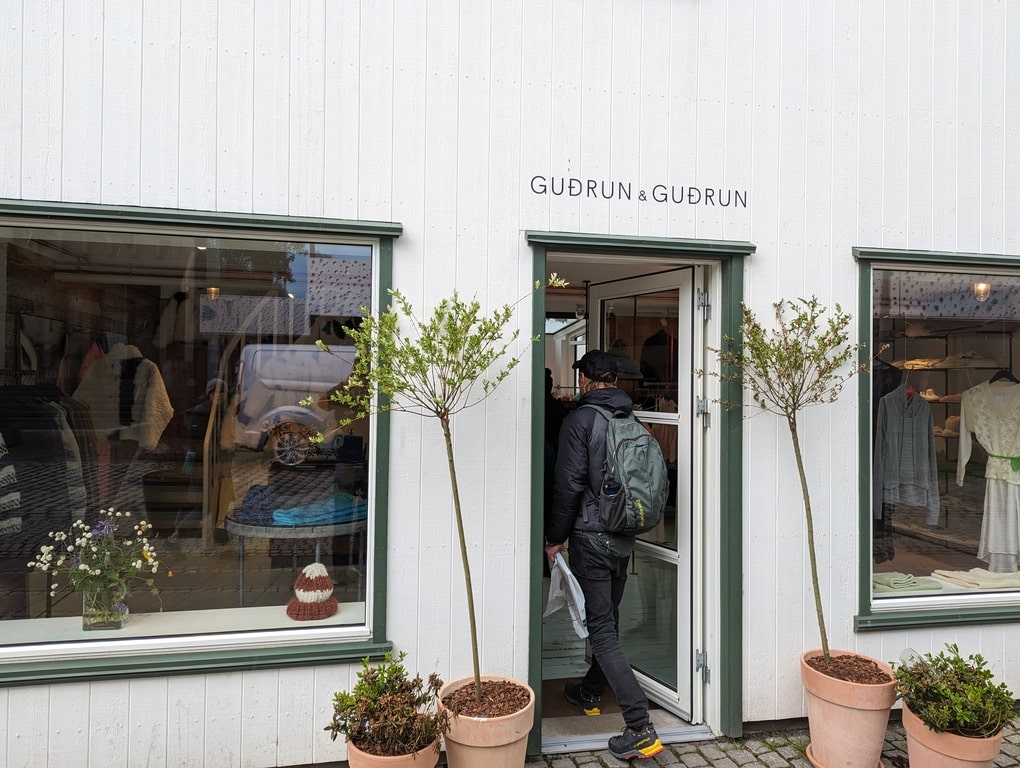
The designs follow traditional Faroese handknitted styles, while they utilise local designers to hand knit them. They have a strong focus on ethics, which I really appreciate.

There is also a brilliant book store, H. N. Jacobsens Bókahandil, which includes a number of amazing books, including one by an author we met on our trip, ‘The Land of Maybe’ by Tim Ecott.

If you’re visiting with kids, there is a children’s section at the back with toys and board games, as well as children’s books.
The books in this store are in a variety of different languages, predominantly being Faroese, but not all, meaning you can look for what you’re after, whether that’s a book in Faroese, English or Danish, even some being in Norwegian.

I personally loved that I was in a book store in the Faroe Islands and saw a Goal magazine highlighting Brighton, a place I had been living for the past 15 years, home follows me everywhere!
Next door, and connected to the book store, was a cafe which produced a top notch cafe latte, ideal when energy was dipping and I was craving a cuppa.
11) Head To Tjørnuvík
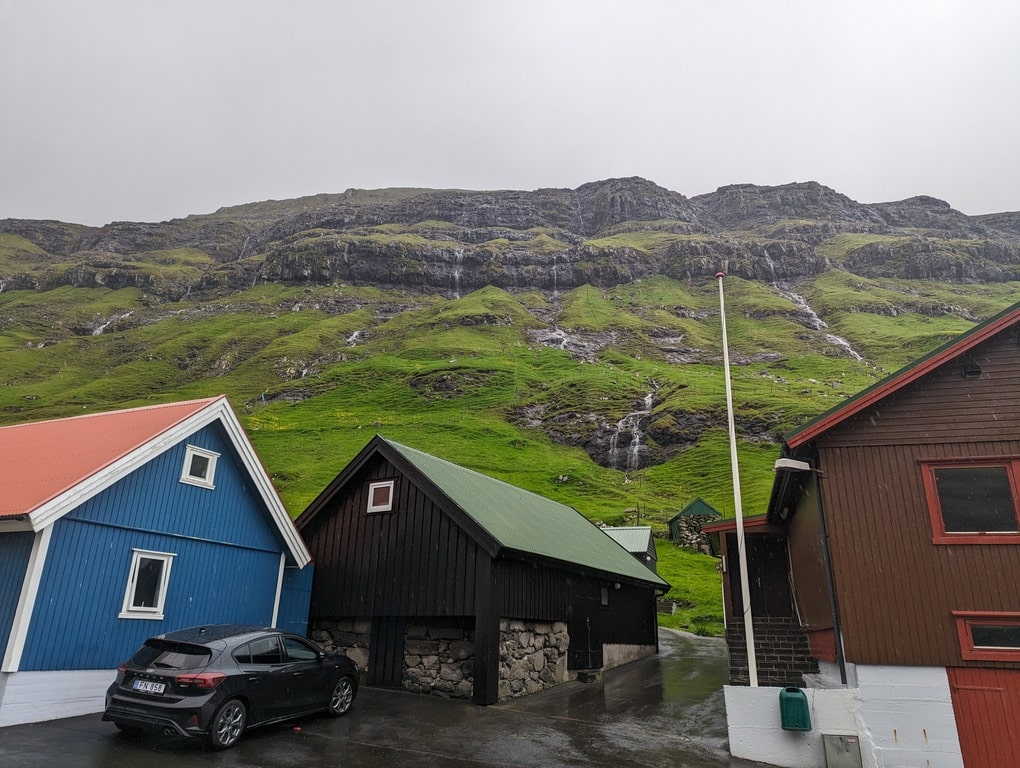
This petite village is surrounded by hillsides and with a black beach, something I’ve not seen before. It’s actually a great spot for surfing, not that I’d be brave enough to jump in the sea on the day, but people travel over to embrace the bigger waves here.

While the tunnels bring a lot of convenience and shorten the time to get to where you need to go, the path to Tjørnuvík was incredible, looking out at the sea and cliff edges, it was certainly something I appreciated on my visit.
You can expect virtually every rooftop to look a little different to their neighbours, while you will also spot some fish hanging outside to ferment.
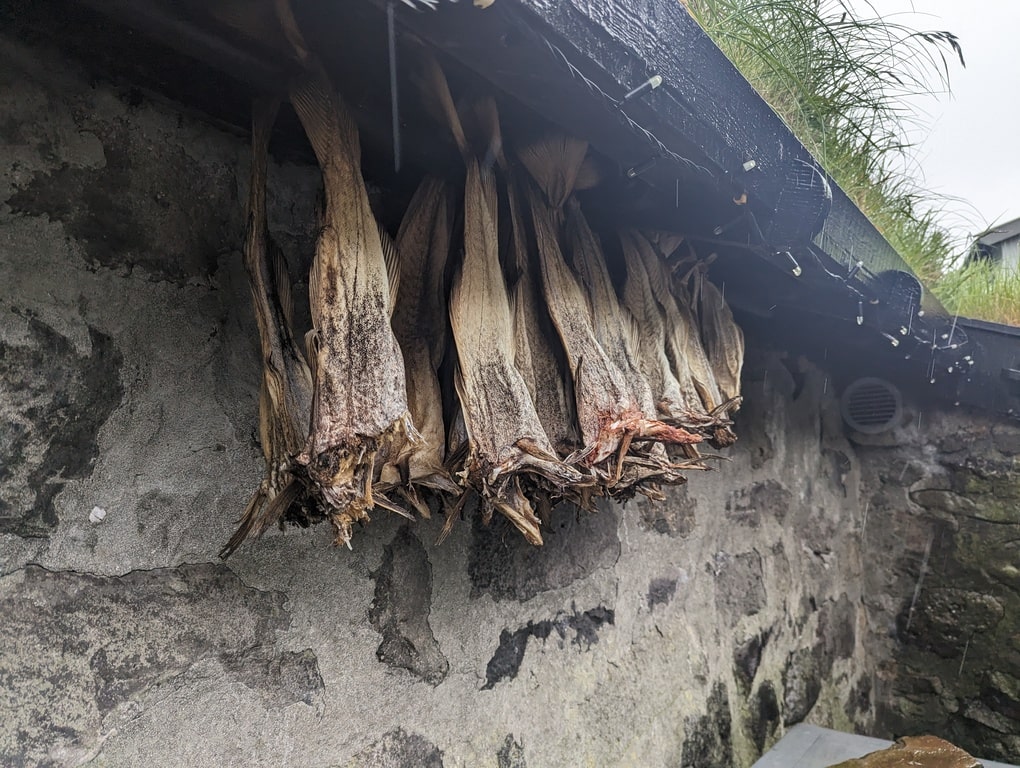
This is a popular location for those that want to go in hikes, unsurprisingly considering how astounding the views were with the surrounding mountainside.
12) Risin And Kellingin
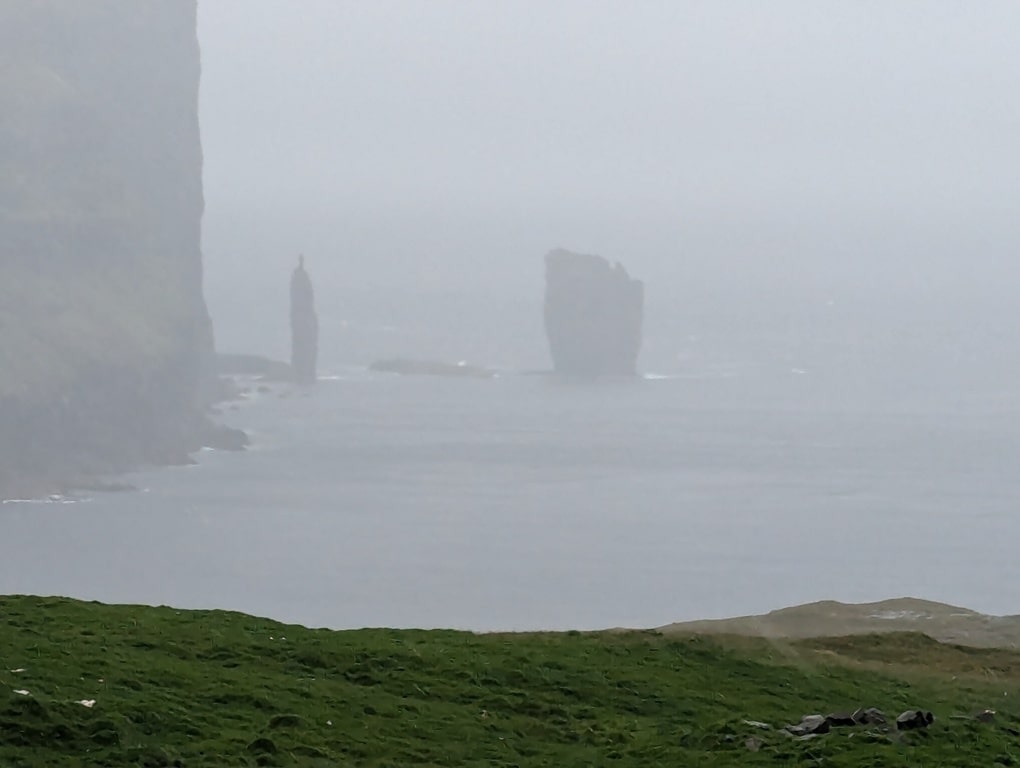
These two rock formations hold a very intriguing folk tale, known as the Giant and the Witch, or the Giant and his wife.
Supposedly, an Icelandic Chief wanted to steal the Faroe Islands, so he sent a giant and his witch wife off to fetch them.
They tied a rope around the islands and began to pull them towards Iceland. Being creatures of the night, they couldn’t be seen by the sun or they would turn to stone. However, they struggled to loop the rope onto the mountainside, making several unsuccessful attempts.
Eventually the sun came up and turned them both to stone, now they face westward wishing for their home which they’ll never see. All the stories have quite a dark angle, which I quite like.
You can admire the Risin and Kellingin while travelling over to Tjørnuvík, or indeed while you are there. It can however also be admired from Streymoy island.
13) Gjógv the Sea Gorge Village

This village has a stunning gorge, while there used to be a zipwire that went down but that has sadly gone (well, a relief for my fear of heights).
With a population of around 50 people, this is another picturesque quaint little village with a deep valley running through.
You might also get very lucky and spot some puffins while here, something they say you can often do but we unfortunately didn’t manage to see any.

There is a public toilets here, which you can stop off at, plus a little cafe where you can pick up a coffee and some biscuits.
I’d definitely recommend packing some warm waterproof clothing when visiting, as this was arguably the coldest area we went to, so zip up and strap on those thermals.
Apparently during the winter months the gorge often fills up with white foam, which makes for an amazing sight.
If you drive back up the hill a bit, you can get a great view of the village, something we stopped to admire while leaving.
14) Mjørkadalur Prison

Talk about a view! This is the main prison on the island, however you only go here for up to 9 months, otherwise you’d head to Denmark.
It might sound like an odd thing to see a prison, but this is a truly unique prison, while if you’re passing by to see a waterfall or a fjord then you might as well stop for a few snaps.
Unlike any typical prison, this small facility is known for its picturesque surroundings, traditional grass-roofed architecture, and an overall peaceful atmosphere that sharply contrasts with the grim reputation of most correctional institutions. Although it only houses a handful of inmates serving short-term sentences for minor offences, the prison has garnered attention for its stunning views over Kaldbaksfjørður Fjord and the rugged mountainous landscape.
Visitors can stop by the viewing point nearby to catch a glimpse of this unique sight while taking in the breathtaking scenery. With its low security and serene environment, Mjørkadalur Prison has been hilariously dubbed the ‘world’s first five-star prison’. It’s a fascinating example of the harmonious blend of modern life and traditional Faroese culture, making it a quirky yet memorable addition to any itinerary.